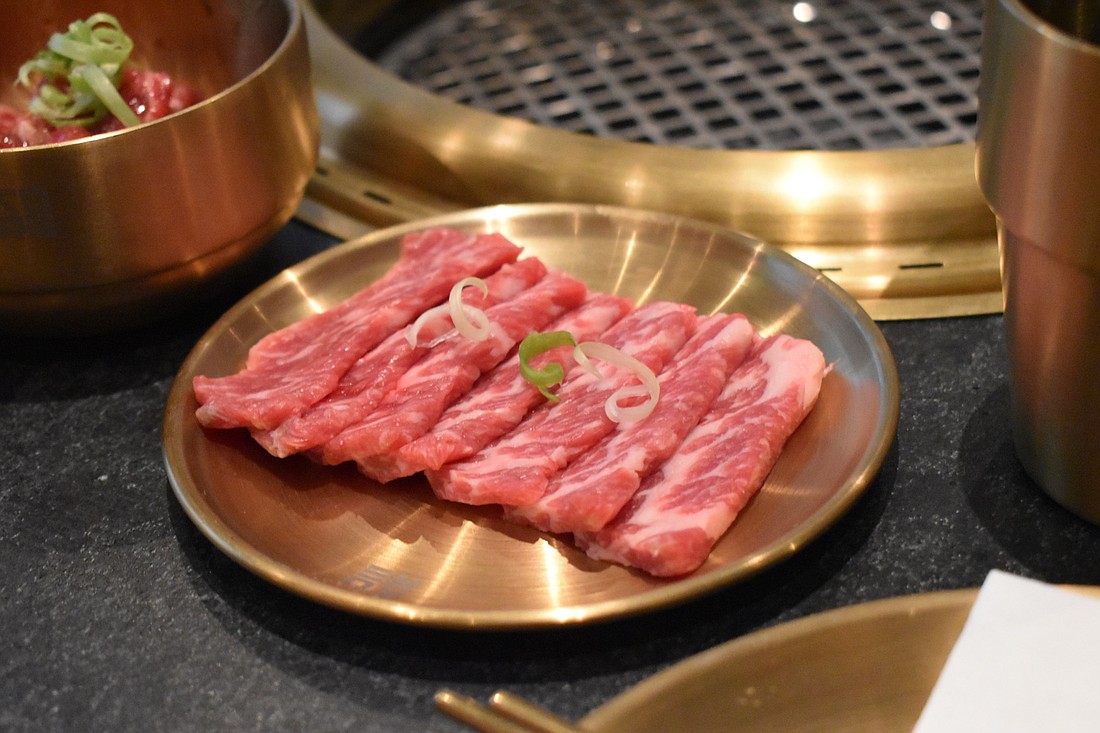- May 5, 2025
-
-
Loading

Loading

Daniel Dokko had a nice score after bringing JPAN to University Town Center six years ago, so he decided to try again in East County, this time with Korê Steakhouse that just opened at Waterside Place.
Dokko said he didn't see other restaurants in East County that offered a taste of his Korean heritage, so he took it upon himself to bring it to the community.
“Thirty years ago, Chinese food was very popular,” he said, "Fifteen years ago, Japanese food was very popular. Now Korean food is going to be the most popular. And we didn’t want to open just any Korean restaurant. We wanted to become a staple.”
Born to parents Yung A Dokko and Edson Dokko from Seoul, South Korea, and raised in Brazil, he hired a management team that includes two former JPAN UTC staff members: South Korea native Clark Park, who serves as a chef and manager, and Indonesia native Anderyas Putranto, who will be a manager.
Dokko said the early customer feedback has been positive.
The experience, he explained, is designed to offer a high degree of authenticity and quality. Recipes are made with expensive ingredients and are inspired by the cooking that he and Park enjoyed in their homes growing up.
Most of the recipes, Dokko said, Park learned from his mother, Yong Mi Kim.
Park will sometimes call her to ask for cooking tips, though the 12-hour time difference between Florida and Korea, where she lives, means they can only talk very early or very late during the day.
"Whenever I make a dish or some sauce, I remember my mom is a really good cook," Park said. "I just ask her, 'Whatever you think you'd make for me, tell me how you'd make it.' She just tells me: Salt this much, sugar this much, and whatever other ingredient this much. Every time, she tells me: 'Whatever you make, always make it the same. Be consistent.'"
Park said one useful tip he’s received involved the making of the kimchi, a staple of Korean food set to become available when the full menu arrives on April 11. Kimchi is a dish of Napa cabbage salted for dehydration, then sliced and stuffed with Korean chili pepper paste, garlic, onions, carrots and ginger, before all the ingredients are fermented and then stored for a few days.
Kim told Park that the best way to slice cabbage is by cutting into it only a short way before pulling them apart. This makes the cabbage split along the natural edges of the leaves, preventing small shreds from mixing into the dish.
Park said that another time, he sent her a picture of a salad. He recalls, "She said, 'Why is the dressing on your salad already mixed in? Don't do that."
Park said he remembered that this was the way his mother made salads for him when he was younger and that they did in fact look fresher and more appealing when presented unmixed.
Yet despite the effort being invested into creating the dishes, Dokko noted that the restaurant also is based around simplicity. “All it really is is salts and sauces, " he said. "Me, Andre and Clark, we make all the sauces ourselves, and we have special salts that we use, but there’s not any cheese. It’s simple — with the best quality.”
In fact, he said that he's interested in the establishment becoming a Michelin Star restaurant and cited the quality of ingredients as important to this goal.
“We have great vendor relationships,” he said. “They do the best to give us their best.”
One of the most highly regarded delicacies the restaurant offers, he said, is Wagyu beef of grade A5, the highest quality version of the item. Imported from Japan, Wagyu comes from specially bred cows, providing a highly marbled texture and a rich flavor. “It is indescribable,” he said. “It's like butter melting in your mouth.”
Due to the prestige associated with Wagyu, the menus will feature a thorough list of details, such as the location where each cow was bred and dates establishing the freshness of the meat.
One prominent feature that makes the restaurant different is the presence of a grill right in the center of the table.
“There’s nothing better,” said Dokko, noting that he is trying to replicate the experience of eating at a grill with friends. “When you order a big steak, the first bite is delicious, and the last third of the steak is cold. Here, every bite has energy.”
He also cited the staff, whom he describes as equally dedicated to the restaurant’s vision, as important to the experience. Staff members show customers how to use the grill.
Yet despite the work that staff invest into the restaurant, they will politely decline any tips.
“It’s part of Korean culture,” Dokko said. “We’re creating a team that we want to be as authentic as possible. We’re not toning things down. Tips are an American thing.”
Nonetheless, he said employees are well compensated for the absence of tips.
Currently, the menu offers three different order combinations called Chef’s Choice, Butcher’s Pride and Kore Experience, which include, respectively, nine, 10 and 14 different items with each order; these items are priced at $75 (feeds two people), $85 (feeds two people) and $150 (four people). An additional menu with individual items for order will become available on April 11, the day after the restaurant’s grand opening on April 10.
Dokko said he is looking forward to the grand opening of the restaurant. “It was a big investment," he explained. "I am very excited and want to make sure everyone enjoys it.”